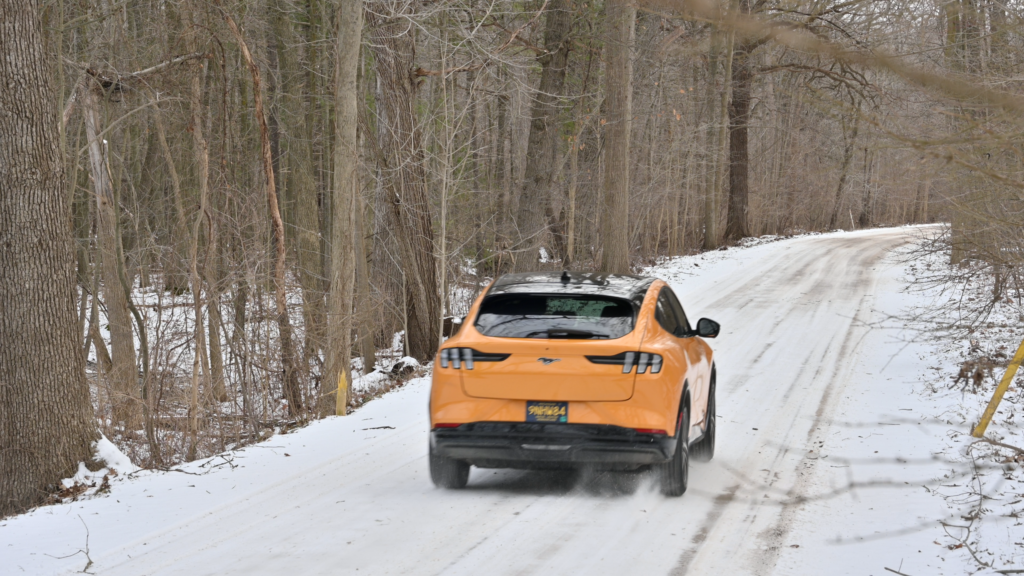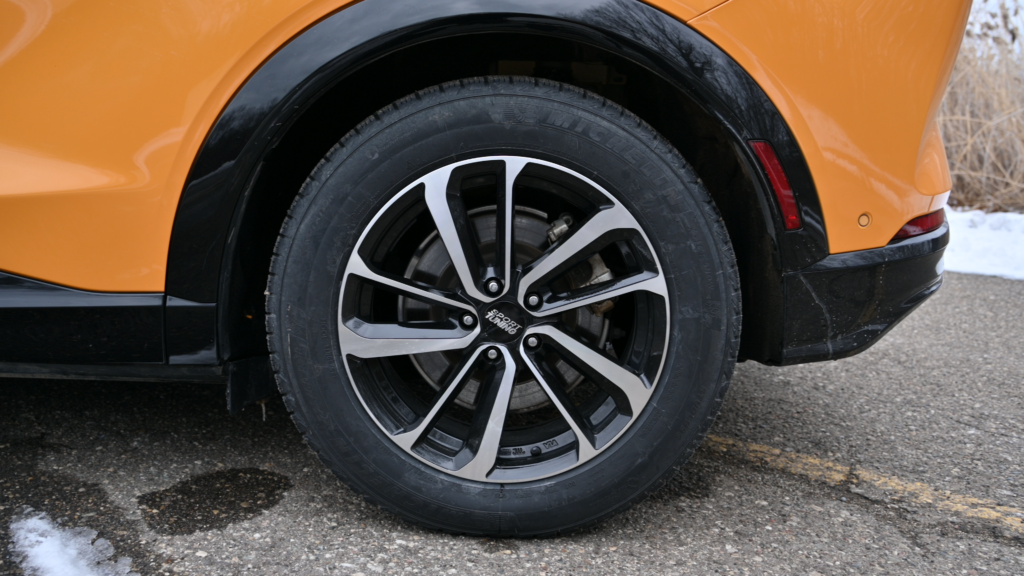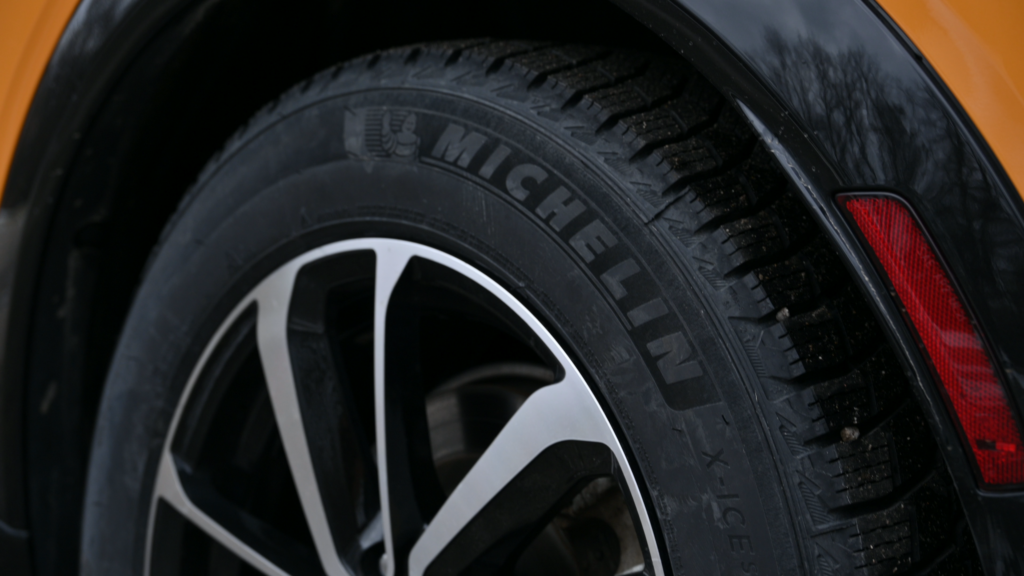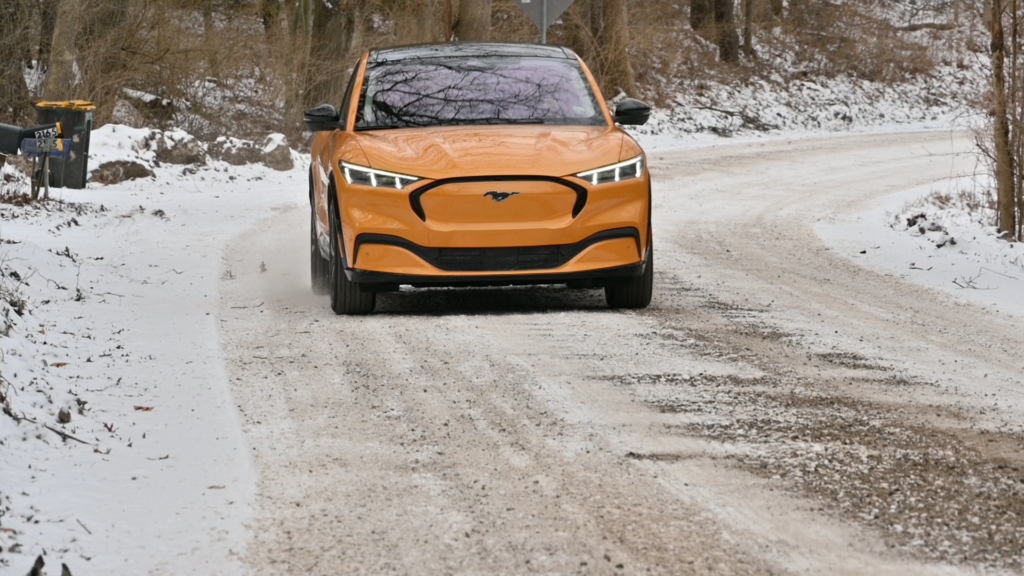All-wheel drive can be a godsend, but you don’t necessarily need one of these systems, even if you live in an area that gets severe snow and ice. A quality set of winter tires will take you farther than you might expect, plus with electric vehicles, skipping all-wheel drive can provide some monumental benefits.
To slip or not to slip, that is the question
Of course, there are great reasons to opt for all-wheel drive. This traction-enhancing technology improves vehicle handling, can enable light-duty off-roading and four driven wheels provide enhanced traction in all conditions – whether in snow and ice, the middle of a monsoon rainstorm or while driving on loose surfaces or in dusty conditions.
There are real – and substantive – reasons to consider all-wheel drive, but you may want to think twice about getting this feature if you’re shopping for an electric vehicle. All-wheel drive is often quite expensive, increasing the price of a vehicle that’s probably already quite rich; this technology adds weight and mechanical complexity; though most concerningly, opting for all-wheel drive often significantly reduces a battery-powered vehicle’s range. Instead, sticking with front- or rear-wheel drive and getting a separate set of winter tires can save you money in the long run and help you go further on a charge.

Illustrating these points, in SE trim, the rear-drive Hyundai Ioniq 6 sedan with the extended-range, 77.4-kilowatt-hour battery pack provides a stellar 361 miles of range. In comparison, the exact same model fitted with all-wheel drive is only rated at 316 miles on a full charge, 45 less, a whopping difference.
Similarly, a base, rear-drive Ioniq 6 with the long-range battery starts at about $43,565 including $1,115 in destination fees. Opting for all-wheel drive, however, brings that figure up to $47,065, an increase of $3,500.
Winter tires: A seasonal cheat code
Running the appropriate tires can greatly increase driving confidence, whether you’re on a racetrack, off-roading in the desert or simply commuting to work in snow and ice. Could you imagine an F1 car running mud-terrain tires? The vehicle would be at an unimaginable disadvantage compared to its rivals. The same is true if you put racing slicks on a Jeep Wrangler. You’d have a hard time moving on wet pavement, much less a mountainside trail or backwoods two-track.
Proving this point, running a good set of winter tires on, say, a rear-drive Mustang Mach-E makes it feel like you can practically drive up the side of Mount Everest. Even in heavy snow, the vehicle steers, stops and accelerates better than some all- and four-wheel-drive trucks and SUVs fitted with all-season tires; the difference is remarkable and immediately obvious.
That extra traction provides a huge confidence boost, especially when you see other drivers slipping and sliding around. Of course, with winter tires you still have to be careful, they’re not vulcanized, carbon black miracles, but vehicles drive far, far better in snow and ice with them installed.
Michelin X-Ice Snow, an excellent choice
In the case of that Mach-E, a set of Michelin X-Ice Snow winter tires deliver the grip. Designed for passenger cars and SUVs, these babies should be available in an impressive 143 sizes for wheels ranging from 15 to a whopping 22 inches.

Careful engineering gives X-Ice Snows an advantage over competing winter tires. For starters, these Michelins feature a V-like tread pattern that’s designed to maintain its shape, even when worn. This configuration also incorporates two types of interlocking 3D sipes – those are the little grooves in the rubber that provide the clawing effect to get your vehicle moving.
These tires also feature the Flex-Ice 2.0 tread compound, a unique rubber mix that maintains its pliability in cold conditions, and more flexibility can mean more traction – but it can also accelerate wear, especially in warm temperatures, which is why it’s important to switch to all-season or summer rubber when temperatures hit about 40 degrees F.
Compared to rival tires, Michelin claims the X-Ice Snow better resists hydroplaning in wet conditions and can actually help improve vehicle efficiency. The manufacturer also says these tires last up to one season longer than competing winter tires, which is money in the bank for many drivers.
The X-Ice Snow tire provides tremendous grip in winter conditions, allowing even a rear-drive Mach-E to scamper up icy inclines with easy. The ride quality with these tires fitted is indistinguishable from the all-season tires used during warmer months. Sometimes winter rubber can be noisier because of their generally more aggressive tread patterns, but these Michelins don’t seem to buzz or hum on dry pavement.

This Mach-E is fitted with 225/60 R18s mounted to a dedicated set of wheels. Pricing should vary by size and retailer, but these are available from Costco, for instance, for about $203 per tire before any installation or disposal fees.
The when and the how
Again, you’ll want to switch to winter tires when the temps drop to roughly 40 degrees F. Their softer rubber compounds remain pliable – and provide more grip – in cold conditions, something that can also boost traction on dry roads. Conversely, you’ll want to swap back to summer or all-season tires when temps rise again.
The easiest way to switch between winter tires and summer or all-season rubber is to have each set mounted on separate wheels. This makes it easy to swap them yourself. Just jack the vehicle up, pull the wheels and install the other set. Done.
If you can’t do the work yourself or don’t want to, a tire shop can easily handle all this, for a fee, of course. It will be cheaper to have them swap between sets of pre-mounted tires, but if buying four extra rims is not in your budget, they can also switch the tires back and forth between the same wheels, though the extra mounting and dismounting will almost certainly cost more. Fitting your winter tires to a dedicated set of wheels makes things much easier and helps preserve your vehicle’s “good” wheels, preventing them from getting damaged by snow, ice or salt.
Beware of “all-season” tires
In the U.S., so many vehicles come from the factory with all-season rubber. Tire manufacturers wax poetically about how advanced their designs are, the amount of grip their latest tread compounds provide and how well these tires perform in every driving situation imaginable. But in reality, all-season tires are often only three-season tires. They can work well in spring, summer and fall, but when temps drop and snow flies, you need something different, because the attributes that make a great summer tire are antithetical to what you want in wintertime.

Switching tires as the seasons change makes a huge difference in how your vehicle performs and is a tremendous boon to safety. The importance of being able to stop, steer and accelerate in snowy and icy conditions cannot be understated. Even with a rear-wheel-drive EV, you’ll be able to travel with confidence and wave as you sail past larger trucks and SUVs that aren’t running season-appropriate tires.
All-wheel drive is nice, but not always necessary
All-wheel drive can help increase your electric vehicle’s traction and allow you to do some light off-roading, but these benefits do come with several downsides, like a higher price, greater complexity and oftentimes significantly reduced range. Opting for good winter tires – especially on a separate set of wheels – can help you run rings around other vehicles in snow and ice, all without breaking the bank.
